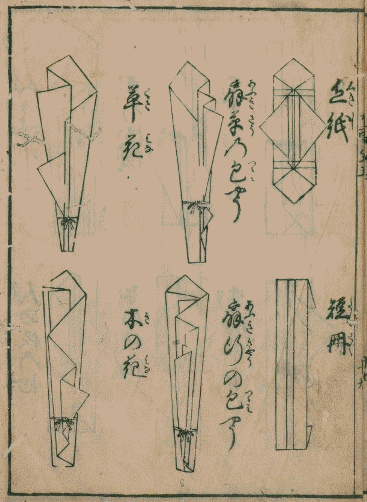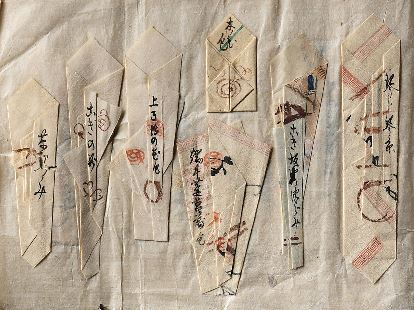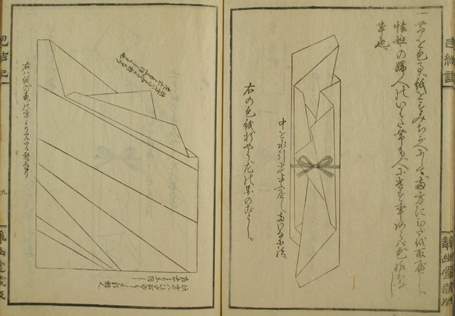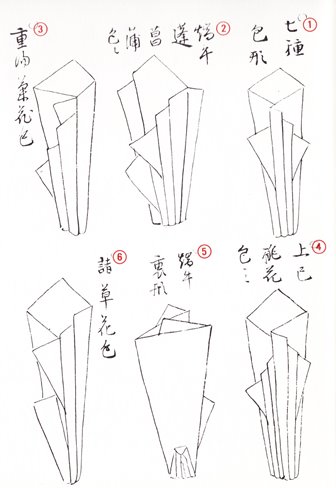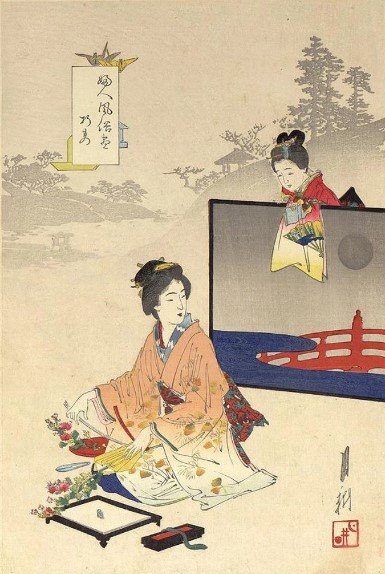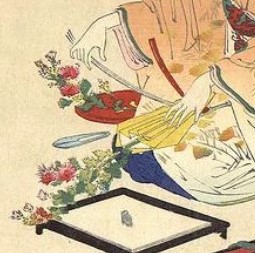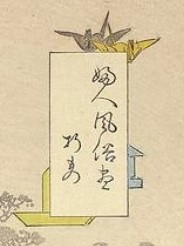| The Public Paperfolding History Project
Last updated 23/1/2024 x |
|||||||
| Tsutsumi - General | |||||||
| This
page is being used to collect information about Tsutsumi
(wrappers) in general. Please contact me if you know any
of this information is incorrect or if you have any other
information that should be added. Thank you. There are more specific pages about Noshi, and about Open Wrappers and Closed Wrappers. 'Tsutsumi' just means 'wrapping' in a very general sense. There are a huge variety of wrappers found in the Japanese paperfolding tradition and it is difficult to divide them into completely distinct categories. However, it does seem useful to me to distinguish between two of the most obvious categories, which I call closed and open wrappers respectively. Closed Wrappers are folded paper packages the design of which is often (or perhaps usually) specific to the foodstuff or other items the package is intended to contain. These wrappers are closed so that the contents don't fall out. Open Wrappers are formal / ceremonial paper wrappers for flowers or greenery, usually (or perhaps always) of a design specific to the particular flower or greenery they are intended to wrap. I call these wrappers 'open' because they do not enclose the whole of the flowers or greenery but only wrap part of the stems. Note that there are many other wrappers which do not easily fall into either of these categories. (The terms Open and Closed Wrappers are my own and do not reflect any Japanese usage that I am aware of. Japanese usage does not seem to make this distinction, but it seems helpful to me to do so.) ********** Timeline 1333 to 1573 In his article 'History of Origami in the East and the West before Interfusion', published in 'Origami 5: Fifth International Meeting of Origami, Science, Mathematics and Education', .... Hatori Koshiro says 'According to Ise Sadatake (see entry for 1764 below)... such paperfolding was established in the Muromachi period (1333 to 1573)'. This may well, of course, be true, but, as far as I know, cannot yet be backed up by documentary evidence. ********** 1692 The Japanese book 'Onna Chohoki' (Women's Treasury) published in 1692 contains a section at the end of the book which illustrates the folding of various kinds of tsutsumi,including both open and closed wrappers.
********** 1697 The Metropolitan Museum in New York has in its collection a scrapbook album of tsutsumi, the Origata Tehon of Kikuchi Fujiwara no Takehide, and various loose items which is dated the third month of 1697.
********** 1764 Further evidence for the folding of formal wrappers comes from the 'Hoketsuki' (wrapping and tying) by Ise Sadatake, written in 1764. This book is also sometimes called the 'Tsutsumi-no Ki'. I do not know which designation is correct or why there are two different titles in use. One specimen page is shown below.
********** 1778 'Onna Imagawa Oshiebumi' by Kitao Tokinobu, a book of woodcut prints published in 1778, contains two spreads illustrating tsutsumi. ********** 1830 Illustrations of various tsutsumi appear in 'Eitai Ozassho Sanzeso', a book of woodcut prints published in 1830. ********** 1830 - 1844 'Kyoka Hayabiki Setsuyoshu' is a book of woodcut prints by Yashima Gakutei said to date from between 1830 and 1844. It contains two pages showing wrapperst of various kinds and ocho and mecho. ********** 1845 Pages 4 to 7 of the Kan No Mado, written in 1845, drawings of, and sometimes instructions for folding, tsutsumi for several flowers and festivals, including a wrapper for the peach blossom for the Doll's Festival and for the chrysanthemum for the Choyo no Sekku.
********** 1885 'Kindergarten Shoho' (Preliminary Kindergarten) by Iijima Hanjuro was copyrighted on October 4th Meiji 17 (1884) and published by Fukuda Senzo in August of Meiji 18 (1885) contains several pages of illustrations of formal wrappers. ********** 1891 This print from 1891, titled 'Orimono', from the series 'Fujin Fuoku Zukushi' (The Manners and Customs of Ladies) shows a woman folding a tsutsumi (formal wrapper for flowers).
********** 1892 'Kani Shukogaku' (Simple Handicraft) by Tamotsu Shibue, which was published in Tokyo in 1892, also contains a page illustrating various designs for wrappers. ********** 1908 'Origami zusetsu' (Illustrated Origami) by Sano Shozo, which was published in Tokyo in 1908, contains diagrams for many weappers, both of the open and closed varieties. ********** |
|||||||
